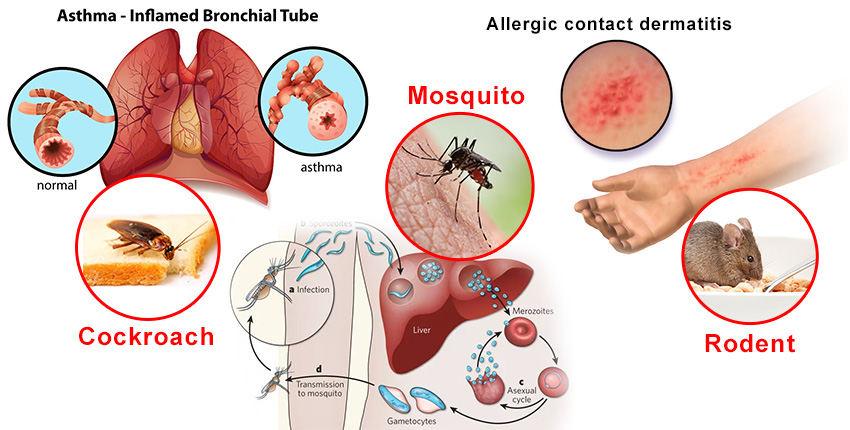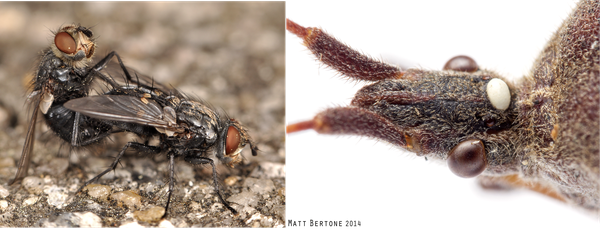The Basic Principles Of Eco Bed Bug Exterminators Dc
Table of ContentsThe Buzz on Eco Bed Bug Exterminators DcThe 6-Second Trick For Eco Bed Bug Exterminators DcThe smart Trick of Eco Bed Bug Exterminators Dc That Nobody is Talking AboutWhat Does Eco Bed Bug Exterminators Dc Do?How Eco Bed Bug Exterminators Dc can Save You Time, Stress, and Money.
Because pesticides are toxic, they are also potentially dangerous to human beings, animals, other microorganisms, and the atmosphere. Individuals that utilize pesticides or regularly come in call with them have to recognize the relative poisoning, prospective wellness impacts, and preventative steps to lower exposure to the products they make use of. Threat, or risk, of using chemicals is the potential for injury, or the level of danger associated with making use of a chemical under an offered set of problems.
Nevertheless, applicators can reduce or virtually eliminate direct exposure-- and thus lower hazard-- by complying with the tag directions, using personal protective garments and devices (PPE), and taking care of the chemical correctly. As an example, even more than 95 percent of all pesticide direct exposures originate from facial direct exposure, mostly to the hands and forearms. By using a pair of unlined, chemical-resistant gloves, this kind of direct exposure can be virtually removed.
The harmful impacts that occur from a single exposure by any kind of route of entry are termed "intense effects." The 4 paths of exposure are dermal (skin), breathing (lungs), oral (mouth), and the eyes. Acute toxicity is identified by analyzing the facial toxicity, inhalation poisoning, and dental toxicity of examination animals.
Eco Bed Bug Exterminators Dc for Beginners
Acute toxicity is measured as the amount or concentration of a toxicant-- the a.i.-- needed to eliminate half of the animals in an examination populace. This measure is normally expressed as the LD50 (lethal dose 50) or the LC50 (dangerous focus 50). Additionally, the LD50 and LC50 values are based on a solitary dose and are recorded in milligrams of pesticide per kilogram of body weight (mg/kg) of the guinea pig or partially per million (ppm).
The reduced the LD50 or LC50 worth of a chemical item, the better its poisoning to people and animals. Pesticides with a high LD50 are the least poisonous to humans if utilized according to the directions on the item tag. The persistent poisoning of a pesticide is established by subjecting examination animals to long-term exposure to the active ingredient.
The persistent poisoning of a pesticide is much more tough than intense toxicity to establish with laboratory evaluation. Products are classified on the basis of their family member acute toxicity (their LD50 or LC50 worths). Chemicals that are categorized as very poisonous (Toxicity Group I) on the basis of either dental, facial, or inhalation poisoning have to have the signal words DANGER and POISON printed in red with a skull and crossbones icon plainly presented on the front panel of the plan tag.
The severe (single dosage) oral LD50 for pesticide products in this group ranges from a trace total up to 50 mg/kg. Exposure of a couple of drops of a material taken by mouth might be deadly to a 150-pound person. https://christophers-beautiful-site-5ea421.webflow.io/. Some chemical products have just the signal word risk, which informs you absolutely nothing concerning the severe toxicity, simply that the item can trigger serious eye damage or severe skin inflammation
The 9-Minute Rule for Eco Bed Bug Exterminators Dc
In this group, the intense dental LD50 arrays from 50 to 500 mg/kg. A teaspoon to an ounce of this product can be deadly to a 150-pound individual (bed bug treatment). Chemical products classified as either slightly harmful or relatively nontoxic (Toxicity Classifications III and IV) are called for to have the signal word care on the chemical tag

The 10-Second Trick For Eco Bed Bug Exterminators Dc
All pesticide toxicity chemicalPoisoning including the Consisting of, can be found on located product's Item Safety Data Security InformationMSDS). Pesticide labels and MSDS can be obtained from retailers or produces. In addition, the majority of items also have info that can be found on the Web. The symptoms of chemical poisoning can vary from a moderate skin inflammation to coma or even fatality.
Due to the fact that of potential wellness concerns, pesticide individuals and handlers must acknowledge the common signs and signs and symptoms of chemical poisoning. The impacts, or symptoms, of chemical poisoning can be generally defined as either topical or systemic.
The Best Guide To Eco Bed Bug Exterminators Dc
Dermatitis, or inflammation of the skin, is accepted as the most generally reported topical result associated with pesticide exposure. Signs of dermatitis array from reddening of the skin to rashes and/or sores. Some people have a tendency to cough, hiss, or sneeze when exposed to pesticide sprays. Some people respond to the solid odor and bothersome effects of petroleum distillates made use of as carriers in pesticide items.
This sign usually subsides within a few minutes after an individual is removed from the direct exposure to the irritant. A reaction to a pesticide product that triggers somebody not just to sneeze and cough but also to develop serious acute respiratory click here for more info symptoms is much more most likely to be a true hypersensitivity or allergic reaction.
Systemic effects are quite different from topical impacts. They commonly take place away from the initial point of contact as a result of the chemical being absorbed into and dispersed throughout the body. Systemic impacts commonly include queasiness, throwing up, fatigue, frustration, and intestinal disorders. In sophisticated poisoning instances, the individual may experience changes in heart rate, problem breathing, convulsions, and coma, which can lead to death.